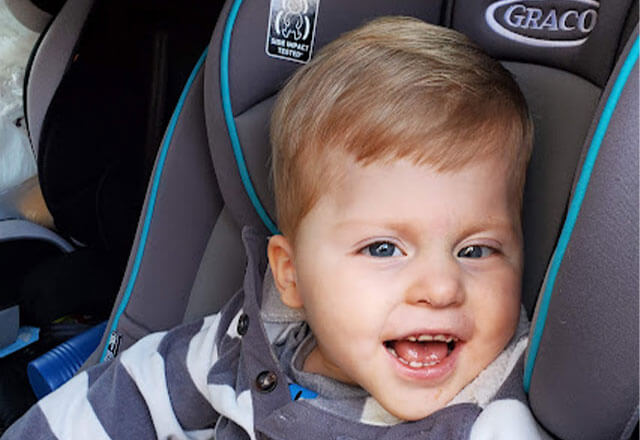Meet Brayden

Melissa and Adam weren’t expecting any problems with the birth of their third child, but at 20 weeks of pregnancy, a routine checkup turned their world upside down. The ultrasound showed an abnormality: Their baby had spina bifida, a neural tube defect that can form during fetal development. In babies with the condition, the neural tube won’t close all the way, causing the backbone to form irregularly over that spot, resulting in an exposed spinal cord and nerves. Melissa and Adam went straight to Johns Hopkins Children’s Center for treatment.
“They know the complexity of the situation,” says Adam. “They make you feel at ease.”
And the situation truly was complex. Spina bifida is often called “the snowflake condition” because no two diagnoses are completely the same. For Melissa and Adam’s baby, the defect formed below his rib cage and ran down his spine. It would remain relatively stagnant in utero, so the real danger was in the brain, where spinal fluid was leaking and filling the ventricles. Each week, Children’s Center doctors measured the amounts of fluid, waiting to induce delivery in the hope of giving the baby as much time to develop as possible.
Finally, at 37 weeks, doctors made the call. It was time. Melissa was brought to the operating room to deliver her baby, because he would need back-closure surgery for the exposed part of his spine. While they knew the battle was just beginning, Adam and Melissa felt a weight lifted when they heard Brayden Charles’ first cries as their “brave warrior” entered the world.
Brayden was prepped for not one but two surgeries. The back-closure surgery lasted four hours, after which he was hooked up to oxygen and placed under observation. The next day, Brayden’s second surgery was performed to have a shunt implanted — an incredibly delicate procedure on a newborn.
Brayden was on oxygen in the neonatal intensive care unit for almost a week when doctors realized there would be one more hurdle: Brayden needed a third and final surgery. The skin on his back at the base of his spine was too thin after the first surgery and was at risk of rupturing, so it needed to be repaired.
The procedure was a success and Brayden was placed back on oxygen. While his mother held him, Brayden reached his little hand up to push the oxygen cannula away from his face. Melissa and a nurse watched in amazement as Brayden began to breathe on his own. Soon after, his parents were able to take him home to his big brothers.
Brayden and his parents spent much of his first year in and out of Johns Hopkins Children’s Center for follow-up. Today, he uses a wheelchair, but his father says it hardly holds him back from being an excitable little boy. Adam hopes Brayden’s life will only get easier going forward.
“Johns Hopkins Children’s Center has given us that hope,” says Melissa. “When I know we’re going there, I feel relief. I know they’re going to give Brayden what he needs.”
Adam and Melissa realize what a miracle their son is, and what an ordeal he survived during his first few days of life.
Melissa says that any donation to Johns Hopkins Children’s Center, “no matter how small, goes to making sure that little kids like Brayden have the best chance at the longest life possible.”

